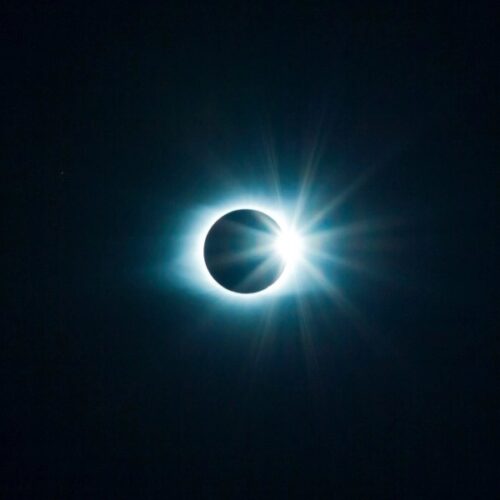
Czech research heads into space: from reproduction to nanorobots in space. 13 experiments for astronaut Aleš Svoboda’s mission
Thirteen Czech experiments are heading into space with Aleš Svoboda
Thirteen Czech scientific and technological experiments have been given the green light for a trip to the International Space Station (ISS). The projects were developed as part of the upcoming mission of Czech astronaut Aleš Svoboda and succeeded in a demanding selection process conducted by the European Space Agency (ESA).
The experiments cover a wide range of areas, from biomedicine and materials science to advanced technologies designed for microgravity. The individual teams can now begin preparing the first prototypes, which will then be transformed into the final versions intended for space flight.
The projects were presented during the Space2Business conference, which took place as part of Czech Space Week at the Liechtenstein Palace in Prague. The entire initiative is part of the national program Czech Path to Space, which connects scientific research, education, and industry and strengthens Czech participation in international space activities.
In addition to Aleš Svoboda, who will be a key figure in the mission, other distinguished guests also spoke at the conference:
- Ondřej Rohlík, program manager and Czech Republic delegate to the ESA Program Council for Human Spaceflight, Microgravity and Space Exploration,
- Simon Challis, ESA ISS Mission Manager,
- Martin Kupka, Czech Minister of Transport.
All emphasized the importance of linking Czech science, industry, and international cooperation for the further development of space activities in the Czech Republic.
This mission and related experiments represent a significant step in Czech space history and pave the way for new discoveries in science and technology.
Czech Journey to Space – Inspiration for the Public and Opportunities for Science
The Czech Journey to Space project brings not only opportunities for Czech science, but also inspiration for the general public. According to Transport Minister Martin Kupka, the presentation of thirteen selected experiments that are being prepared for the International Space Station (ISS) together with Czech astronaut Aleš Svoboda is a key moment in the entire initiative.
“From the beginning, it has not been just about the Czech astronaut’s flight to the ISS and back. The goal is to set in motion a ‘snowball effect’ of interest in science and technology, research, and space—not only among the younger generation, but across Czech society as a whole,” said Kupka at the opening of the Space2Business conference.
The minister emphasized that thanks to this project, the Czech Republic is opening up space for scientific and technological projects that would otherwise have difficulty getting into international missions. “The project allows domestic teams from various fields to test their experiments in the real conditions of space flight and take Czech science another step forward,” he added.
Since the beginning of 2024, universities, research institutes, and technology companies from across the country have shown extraordinary interest in participating in the Czech space mission. A total of 70 proposals were submitted in response to the initial call for proposals, of which thirteen of the most promising experiments were selected after several rounds of expert evaluation. The selected projects cover a wide spectrum of Czech research, from nanotechnology and human physiology to educational activities for schools.
According to Ondřej Rohlík, program manager and Czech delegate to the ESA Program Council for Human Spaceflight, Microgravity, and Space Exploration, winning an ESA contract is not a matter of a single assessment. “The selection process involves several rounds of expert evaluation. Czech teams had to demonstrate the high scientific value of their experiments while also meeting strict technical and safety requirements. They are now beginning to work on prototypes, which ESA will then assess in terms of their readiness for integration into ISS systems,” explained Rohlík.
The Czech Journey to Space project thus connects scientific research, education, and industry, strengthens Czech involvement in international space activities, and inspires young talent and the general public to discover the fascinating world of science and technology.
A space mission that can inspire an entire generation
Czech participation in the International Space Station (ISS) through Aleš Svoboda’s mission represents not only a scientific contribution, but also a unique opportunity to inspire the younger generation and Czech society as a whole. According to astronaut Aleš Svoboda, the interest of Czech institutions in participating in experiments for this mission was “overwhelming.”
“The authors of more than 70 project proposals have applied – which is more than in Poland, which is four times larger than the Czech Republic. This clearly shows that the domestic scientific and industrial community has enormous potential, it just needs a chance in an environment that pushes boundaries,” commented Svoboda.
The astronaut also pointed out that in recent years, young people’s interest in studying technical and scientific fields has been declining. However, he believes that the space program can reverse this trend, because inspiration often begins with a powerful story. Svoboda recalled the British Principia mission of astronaut Tim Peake, whose educational activities reached every third school in the United Kingdom and more than two million children.
“This is exactly the type of effect that has the potential to change an entire generation—a generation that will then be responsible for new inventions, companies, and technologies,” Svoboda emphasized.
The Czech astronaut’s mission is more than just a scientific experiment – it is a project that connects education, science, and industry, offering young people the opportunity to see that their interest in technology and natural sciences can have a real impact. The space program thus becomes not only a scientific challenge, but also an inspiration for the future generation of Czech innovators.
Nanorobots and a “smart” T-shirt: Czech healthcare technologies are heading into space
The Space2Business conference, which took place as part of Czech Space Week, was followed by a detailed presentation of Czech experiments that are being prepared for the International Space Station (ISS). Among them are projects focused on medical technologies that combine space research with innovations for medicine on Earth.
CONREX – nanorobots against bacterial biofilms
The first project presented was CONREX, the world’s first experiment in nanorobotics in space, prepared by Martin Pumera’s team from VŠB – Technical University of Ostrava in cooperation with the Czech company TRL Space. Microscopic robots will be tested in microgravity as a tool for removing bacterial biofilms. The results may have significant applications not only in space research, but also in the treatment of cancer and environmental protection.
CANCER – molecular oncology in space
Another project, CANCER, carried out by the Masaryk Memorial Cancer Institute in Brno, combines space medicine with molecular oncology. Scientists are investigating how microgravity and other stress factors affect the human body at the cellular level. Using modern sequencing methods, they will monitor the astronaut’s circulating DNA to detect changes associated with stress, inflammation, or possible pathologies even before clinical symptoms appear.
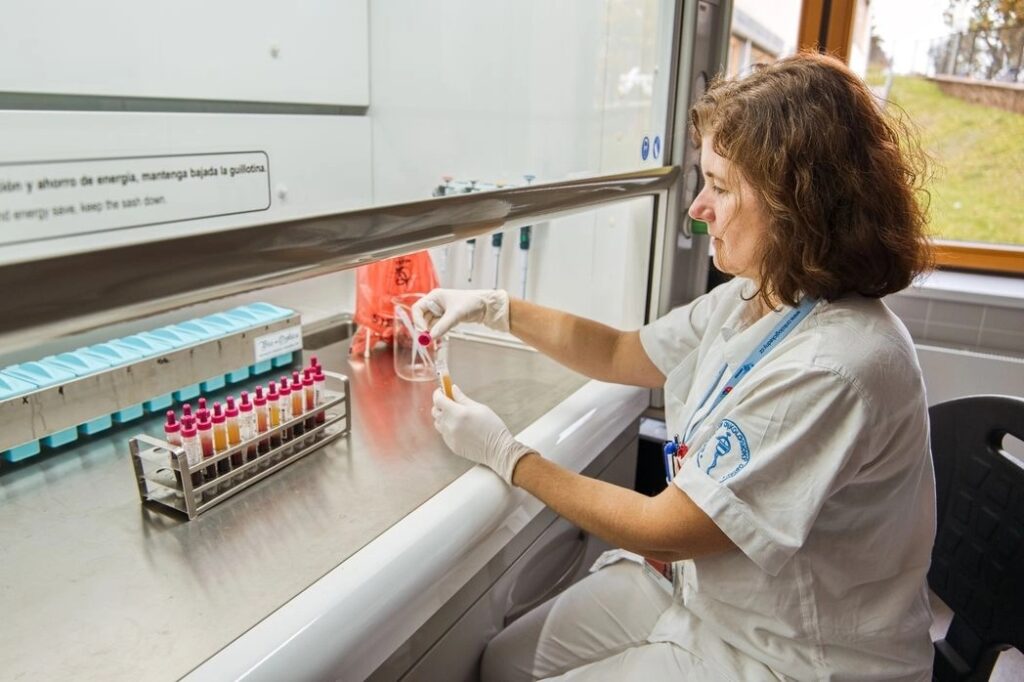
ISS T-Shirt – a “smart” T-shirt that monitors stress and physiology
The ISS T-Shirt, developed by Masaryk University in collaboration with VŠB–TUO, also belongs to the category of medical technologies. Built-in sensors in the garment continuously monitor the astronaut’s physiological indicators and evaluate the so-called stress entropy load, a new metric developed in Brno that quantifies the physical and mental stress on the body.
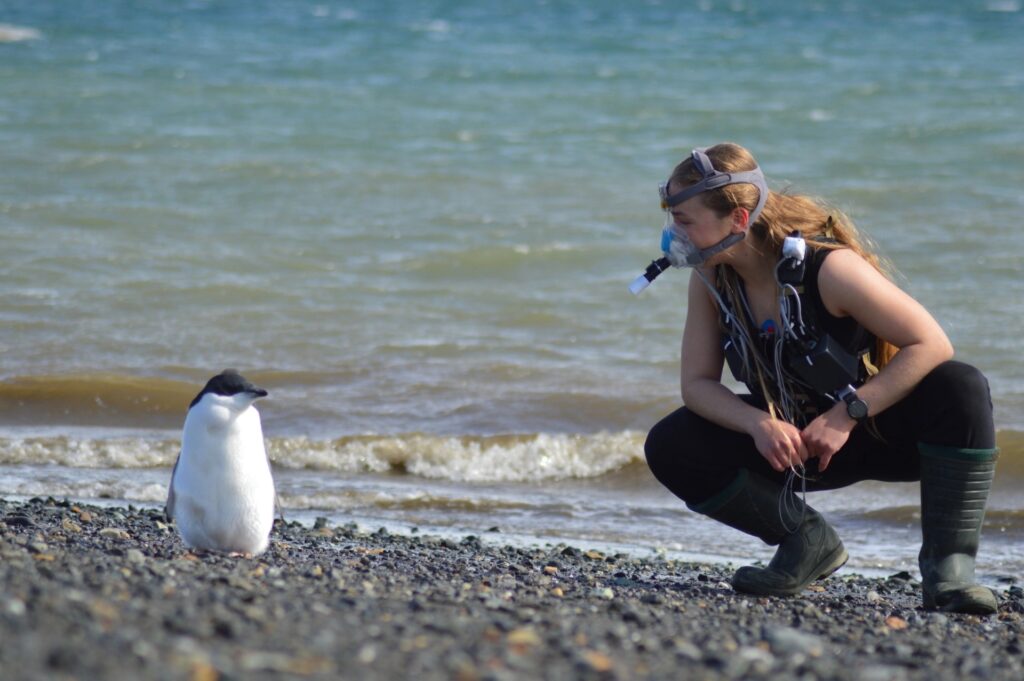
AstroMoWe – smart wearable electronics for movement and muscles
Last but not least, AstroMoWe technology was presented, developed by teams from the Czech Technical University, the University of West Bohemia in Pilsen, G.L. Electronic, and the Textile Research Institute VÚB. The project monitors the muscle and movement activity of astronauts using smart wearable electronics. The data will enable the optimization of training plans and the monitoring of physiological adaptations during stays in microgravity. The technology also has broad potential for use on Earth, for example in rehabilitation, sports diagnostics, and elderly care.
Plants, microalgae, and life support systems: Czech biotechnology in space
The Czech mission to the International Space Station (ISS) also features a strong representation of biotechnology and life support systems that have the potential to support long-term space missions and bring new technologies to life on Earth.
PUMR-B – barley in microgravity
The PUMR-B project, implemented by Palacký University in Olomouc in cooperation with S.A.B. Aerospace, focuses on growing barley in microgravity. The experiment includes the development of a specialized bioreactor for space conditions, which will allow the growth and metabolism of plants to be monitored in a weightless environment.
METRO and CryoAlgae – microalgae as a source of oxygen and food
Other experiments in the field of biotechnology focus on microalgae. The METRO project (CTU and the Institute of Chemical Process Fundamentals of the Czech Academy of Sciences) and CryoAlgae (Charles University) are investigating the use of microalgae for the production of oxygen, food, and omega-3 fatty acids. According to scientists, microorganisms could be a key component of closed ecosystems for long-term missions to the Moon or Mars.
AstroDesmus – biomining and environmental technology
The AstroDesmus experiment at Mendel University in Brno brings a completely new approach to biological resources. The team led by Katarína Molnárová and Vedran Milosavljević will test the resistance of the microalgae Desmodesmus armatus to simulated Martian chlorates and investigate its ability to accumulate metals. The results may contribute to the development of biomining in space as well as to the ecological remediation of mine water on Earth.
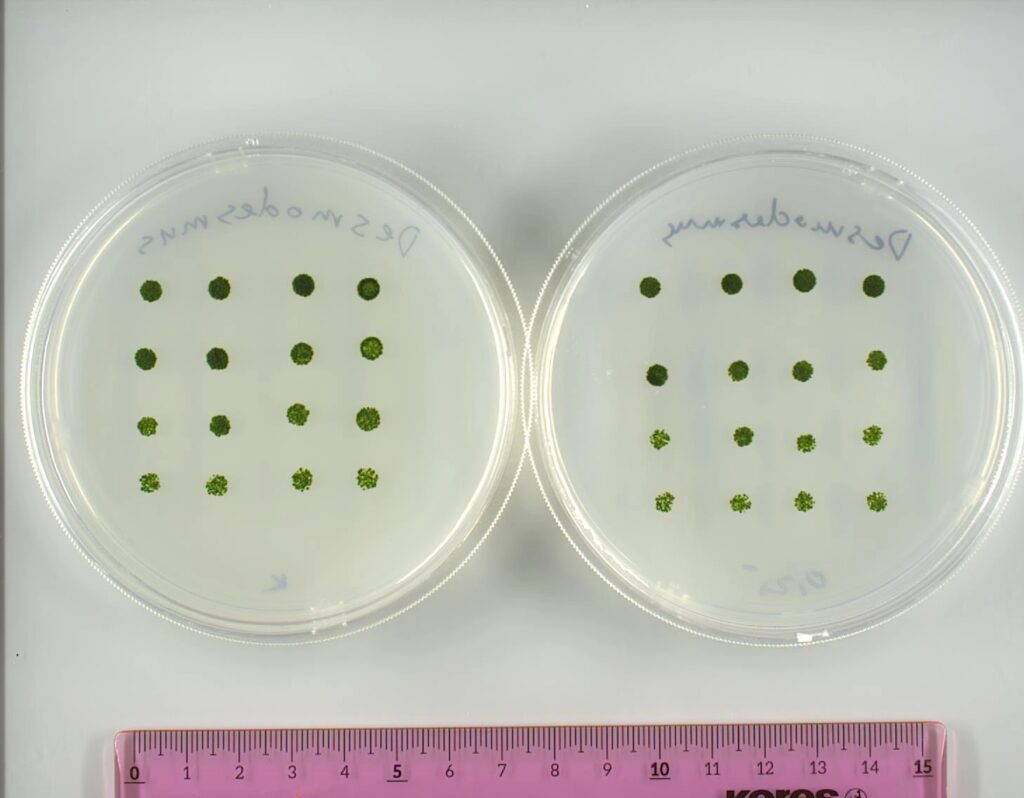
These projects show that Czech teams are able to combine basic research with practical applications that can have a significant impact on future space missions and technological development on Earth. Biotechnology is thus becoming not only a tool for scientific discovery, but also a bridge between space and people’s everyday lives.
From digital twins to the origins of life: Czech experiments explore the human psyche and the beginnings of life in space
The Czech mission to the International Space Station (ISS) also includes experiments related to psychology, cognitive performance, and the origins of life itself. These projects open up entirely new possibilities for research into humans and basic biological processes in the extreme conditions of microgravity.
ICARUS ARMOR Next Gen – the astronaut’s digital twin
The ICARUS ARMOR Next Gen project, developed by UptimAI in collaboration with Brno University of Technology, Mendel University, and Charles University, uses artificial intelligence to create a digital twin of an astronaut. The goal is to predict human cognitive performance in extreme conditions and optimize workloads during missions. Similar technology could also be used for pilots, firefighters, or doctors working in demanding professions where precise timing and reactions under stress are crucial.
PROTOCELL – searching for the origins of life
The Institute of Organic Chemistry and Biochemistry of the Czech Academy of Sciences is behind the PROTOCELL project, which investigates the origin of so-called protocells – the precursors of today’s living cells. In incubators on the ISS, scientists will observe whether these primitive cell structures can also form in a weightless environment. Positive results would support the hypothesis that the seeds of life could have originated outside Earth, which would have a fundamental impact on astrobiology and our understanding of the origins of life.
ZOE – Reproductive Biology in Microgravity
The ZOE experiment, conducted by the Institute of Nuclear Physics of the Czech Academy of Sciences, focuses on the development of chicken embryos in conditions of microgravity and increased radiation. The aim is to understand the reproductive processes that will be necessary for multi-generational space flights into deep space. The results will provide valuable information for planning long-term missions and sustainable life beyond Earth.
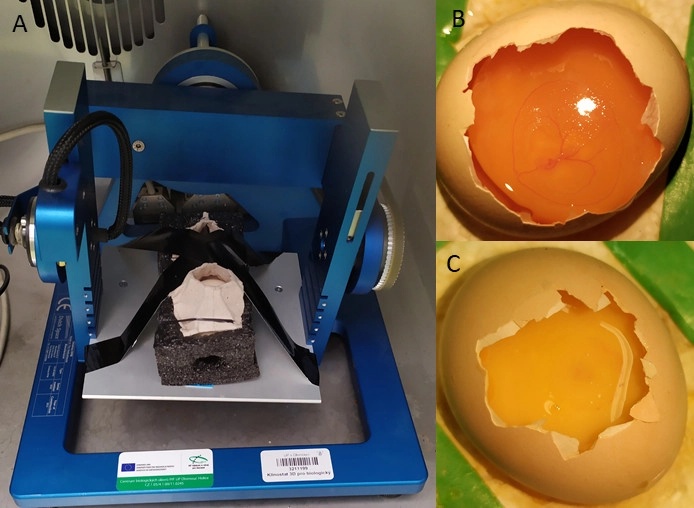
These projects show that Czech science is capable of combining modern technology, artificial intelligence, and basic biology to push the boundaries of research in extreme conditions, which can bring innovation not only to space missions but also to applications on Earth.
Safety, education, and popularization: Czech experiments connect science and society
The Czech mission to the International Space Station (ISS) also includes projects focused on astronaut safety, education, and the popularization of science, which connect technical research with interactive programs for the public.
CZPAD – accurate measurement of radiation exposure
Among the technically focused projects, CZPAD (Czech Personal Active Dosimeter), developed by the Institute of Nuclear Physics of the Czech Academy of Sciences, stands out. This personal active dosimeter will allow astronauts to measure cosmic radiation doses in real time on different parts of the body. The data obtained will help to better understand radiation exposure not only in space, but also in areas such as air transport and medicine, thereby contributing to the protection of human health in extreme conditions.
EDOUTA – education and popularization of space
The mission also includes an extensive educational program called **EDOUTA (Education and Outreach Activities), led by Jan Spratek from Planetum in cooperation with the ESA/ESERO Czech Republic Education Office. The project combines live broadcasts from the ISS, educational videos, virtual reality, and the Space Art Lab art project, enabling children and students to learn about space interactively and inspiring them to pursue technical and scientific education.
Next steps in the mission
Thirteen selected experiments are now entering the phase of flight prototype construction, which must undergo rigorous technical testing and ESA approval for integration into ISS systems. Czech astronaut Aleš Svoboda’s flight is tentatively scheduled for late 2027 or early 2028 and will provide a unique opportunity to combine science, technology, and education in one historic project.